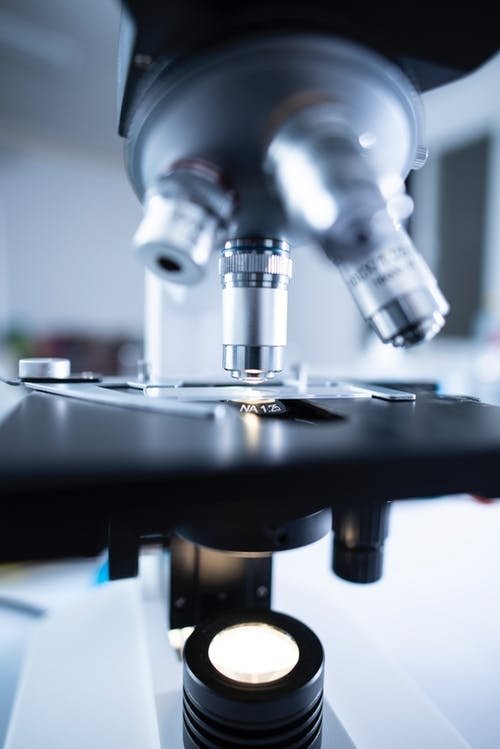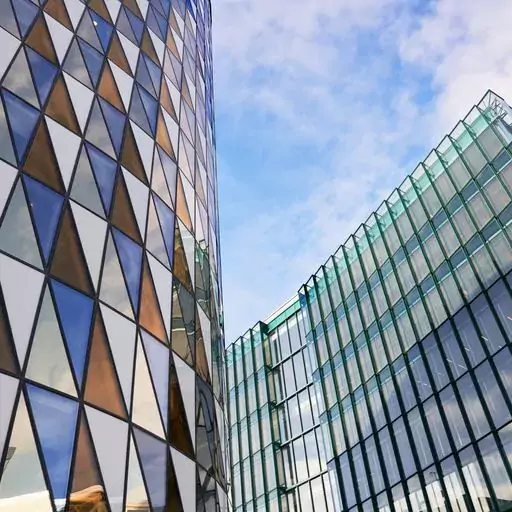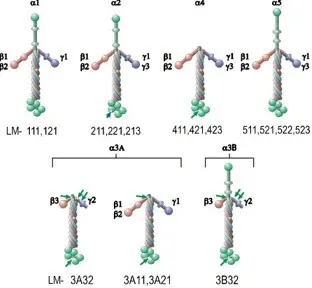Principal Investigator Michael Landreh
Open Mass spectrometry of protein interactions from cancer to memory configuration options
Our research group focuses on the use of mass spectrometry (MS), a technique that allows us to determine the exact weight of biomolecules, to study how proteins recognise and bind their partners.
Mass spectrometry of protein interactions from cancer to memory
All biological processes can be described as biomolecules “talking” to each other, providing cargo, information, or transportation. These events usually take the from of a direct physical contact, i.e. a non-covalent interaction, in which one molecule, most often a protein, binds to one or more partners, inducing a change in the three-dimensional structure. In this manner, proteins can keep in touch with their environment to control their function. For example, upon sensing a change in pH, sider silk proteins lock each other into infinite chains to form very stable scaffolds, and membrane proteins can recognise individual lipid molecules in their environment to tune their activity accordingly. Aberrant, -faulty- interactions, on the other hand, interfere with these processes and are therefore often associated with diseases. Some proteins interact with themselves and form toxic structures such as amyloid fibrils that eventually lead to degeneration of the affected tissue, as seen in e.g Alzheimer's disease. Similarly, destabilization and aggregation of the tumour suppressor p53 and its targets leads loss of cell cycle control and impaired DNA damage repair, giving rise to cancer. Therefore, it is important to understand how exactly proteins “talk” to each other, and use this information to find ways to prevent interactions from going wrong.
Our group focuses on the use of mass spectrometry (MS), a technique that allows us to determine the exact weight of biomolecules, to study how proteins recognise and bind their partners. MS is well-suited for the study of transient interactions, large complexes and even unstable proteins, all of which are refractory to other structural biology methods like NMR and X-ray crystallography. For this purpose, we combine several complementary approaches:
- In “native” MS, we gently transfer proteins together with their binding partners from physiological solutions into the vacuum inside the mass spectrometer and measure the weight and stability of the resulting complex. This reveals what type of interaction holds the partners together, and how many (and which) molecules are involved.
- Hydrogen/deuterium exchange MS measures the incorporation of a chemical label (Deuterium) into the protein. Deuterium is incorporated into flexible and exposed parts of the protein. By measuring the resulting increase in weight, we are able to determine the stability and folding state of a protein, and even locate binding sites for tother proteins.
- MS-based proteomics allows us to identify individual proteins from complex mixtures based on their unique mass “fingerprints”. Using individual proteins as bait, we are able to fish out their specific interaction partners and map upstream and downstream targets.
The combination of all three techniques provides direct insights into several aspects of an interaction, but also generates constraints that can be used to direct computational modelling.
Group Projects
Aggregation-prone proteins are related to a number of diseases such as neurodegenerative disorders, hereditary cancers, and interstitial lung disease, yet remain among the most challenging targets for structural biology. Many of these proteins use liquid-liquid phase separation (LLPS) to form membraneless organelles, but how the assembly of partially disordered proteins generates functional compartments in the cytoplasm and particularly in the nucleus is poorly understood.
Our group uses native mass spectrometry and ion mobility to probe the structures of proteins in membraneless organelles by releasing them from their native assemblies inside the mass spectrometer. Mass spectrometry data are complemented with atomistic and coarse-grained MD simulations, cryo-electron microscopy, and AI-guided structure predictions, to yield detailed models of proteins in native assemblies. We aim to assemble complete models of membraneless organelles that can open new avenues for drug development in cancer and neurodegeneration.
Membrane proteins constitute up to 60% of all drug targets, yet their location in the cell membrane makes studies of their native structures and interactions difficult. We use MS to understand how lipids affect the stability and function of proteins in the lipid bilayer. Current projects include the use of designed membrane proteins to extract first principles of lipid recognition, and how specific lipids can tune the internal dynamics of their target. Together with David Drew and Erik Lindahl at Stockholm University, we investigate the roles of lipids in transporters and ligand-gated ion channels.
A significant part of this work is the development of new mass spectrometric methods, as well as fundamental studies on the mechanisms of ionization and structures of proteins in the gas phase. We routinely use protein engineering and computational chemistry to find new ways to study protein structures and interactions by mass spectrometry.
We collaborate with David Drew and Erik Lindahl (Stockholm U) on membrane protein-lipid interactions, Erik Marklund (Uppsala) on integrating MS and MD simulations, Carol Robinson and Justin Benesch (Oxford) on MS method development, and Jan Johansson (KI) and Anna Rising (SLU) on strategies against amyloid formation, and the biology of spider silk production.
Publications
Neurodegenerative diseases and protein aggregation disorders
A strategy for the identification of protein architectures directly from ion mobility mass spectrometry data reveals stabilizing subunit interactions in light harvesting complexes.
Kaldmäe M, Sahin C, Saluri M, Marklund EG, Landreh M
Protein Sci. 2019 06;28(6):1024-1030
The microRNA miR-34 modulates ageing and neurodegeneration in Drosophila.
Liu N, Landreh M, Cao K, Abe M, Hendriks GJ, Kennerdell JR, et al
Nature 2012 Feb;482(7386):519-23
High-resolution structure of a BRICHOS domain and its implications for anti-amyloid chaperone activity on lung surfactant protein C.
Willander H, Askarieh G, Landreh M, Westermark P, Nordling K, Keränen H, et al
Proc. Natl. Acad. Sci. U.S.A. 2012 Feb;109(7):2325-9
The formation, function and regulation of amyloids: insights from structural biology.
Landreh M, Sawaya MR, Hipp MS, Eisenberg DS, Wüthrich K, Hartl FU
J. Intern. Med. 2016 Aug;280(2):164-76
Membrane proteins
Combining native and 'omics' mass spectrometry to identify endogenous ligands bound to membrane proteins.
Gault J, Liko I, Landreh M, Shutin D, Bolla JR, Jefferies D, Agasid M, Yen HY, Ladds MJGW, Lane DP, Khalid S, Mullen C, Remes PM, Huguet R, McAlister G, Goodwin M, Viner R, Syka JEP, Robinson CV
Nat Methods 2020 05;17(5):505-508
A Mass-Spectrometry-Based Approach to Distinguish Annular and Specific Lipid Binding to Membrane Proteins.
Bolla JR, Corey RA, Sahin C, Gault J, Hummer A, Hopper JTS, Lane DP, Drew D, Allison TM, Stansfeld PJ, Robinson CV, Landreh M
Angew Chem Int Ed Engl 2020 02;59(9):3523-3528
An engineered thermal-shift screen reveals specific lipid preferences of eukaryotic and prokaryotic membrane proteins.
Nji E, Chatzikyriakidou Y, Landreh M, Drew D
Nat Commun 2018 10;9(1):4253
Lipids Shape the Electron Acceptor-Binding Site of the Peripheral Membrane Protein Dihydroorotate Dehydrogenase.
Costeira-Paulo J, Gault J, Popova G, Ladds MJGW, van Leeuwen IMM, Sarr M, et al
Cell Chem Biol 2018 03;25(3):309-317.e4
The role of interfacial lipids in stabilizing membrane protein oligomers.
Gupta K, Donlan JAC, Hopper JTS, Uzdavinys P, Landreh M, Struwe WB, et al
Nature 2017 01;541(7637):421-424
Integrating mass spectrometry with MD simulations reveals the role of lipids in Na+/H+ antiporters.
Landreh M, Marklund EG, Uzdavinys P, Degiacomi MT, Coincon M, Gault J, et al
Nat Commun 2017 01;8():13993
Spider silk
A pH-dependent dimer lock in spider silk protein.
Landreh M, Askarieh G, Nordling K, Hedhammar M, Rising A, Casals C, et al
J. Mol. Biol. 2010 Nov;404(2):328-36
Biomimetic spinning of artificial spider silk from a chimeric minispidroin.
Andersson M, Jia Q, Abella A, Lee XY, Landreh M, Purhonen P, et al
Nat. Chem. Biol. 2017 03;13(3):262-264
Mass spectrometry captures structural intermediates in protein fiber self-assembly.
Landreh M, Andersson M, Marklund EG, Jia Q, Meng Q, Johansson J, et al
Chem. Commun. (Camb.) 2017 Mar;53(23):3319-3322
Mass spectrometric method development
Charge Engineering Reveals the Roles of Ionizable Side Chains in Electrospray Ionization Mass Spectrometry.
Abramsson ML, Sahin C, Hopper JTS, Branca RMM, Danielsson J, Xu M, Chandler SA, Österlund N, Ilag LL, Leppert A, Costeira-Paulo J, Lang L, Teilum K, Laganowsky A, Benesch JLP, Oliveberg M, Robinson CV, Marklund EG, Allison TM, Winther JR, Landreh M
JACS Au 2021 Dec;1(12):2385-2393
Mass Spectrometry Reveals the Direct Action of a Chemical Chaperone.
Gault J, Lianoudaki D, Kaldmäe M, Kronqvist N, Rising A, Johansson J, et al
J Phys Chem Lett 2018 Jul;9(14):4082-4086
A membrane cell for on-line hydrogen/deuterium exchange to study protein folding and protein-protein interactions by mass spectrometry.
Astorga-Wells J, Landreh M, Johansson J, Bergman T, Jörnvall H
Mol. Cell Proteomics 2011 Sep;10(9):M110.006510
Controlling release, unfolding and dissociation of membrane protein complexes in the gas phase through collisional cooling.
Landreh M, Liko I, Uzdavinys P, Coincon M, Hopper JT, Drew D, et al
Chem. Commun. (Camb.) 2015 Nov;51(85):15582-4
Low Charge and Reduced Mobility of Membrane Protein Complexes Has Implications for Calibration of Collision Cross Section Measurements.
Allison TM, Landreh M, Benesch JLP, Robinson CV
Anal. Chem. 2016 06;88(11):5879-5884
Contact
 Photo: Chokniti Khongchum
Photo: Chokniti Khongchum

